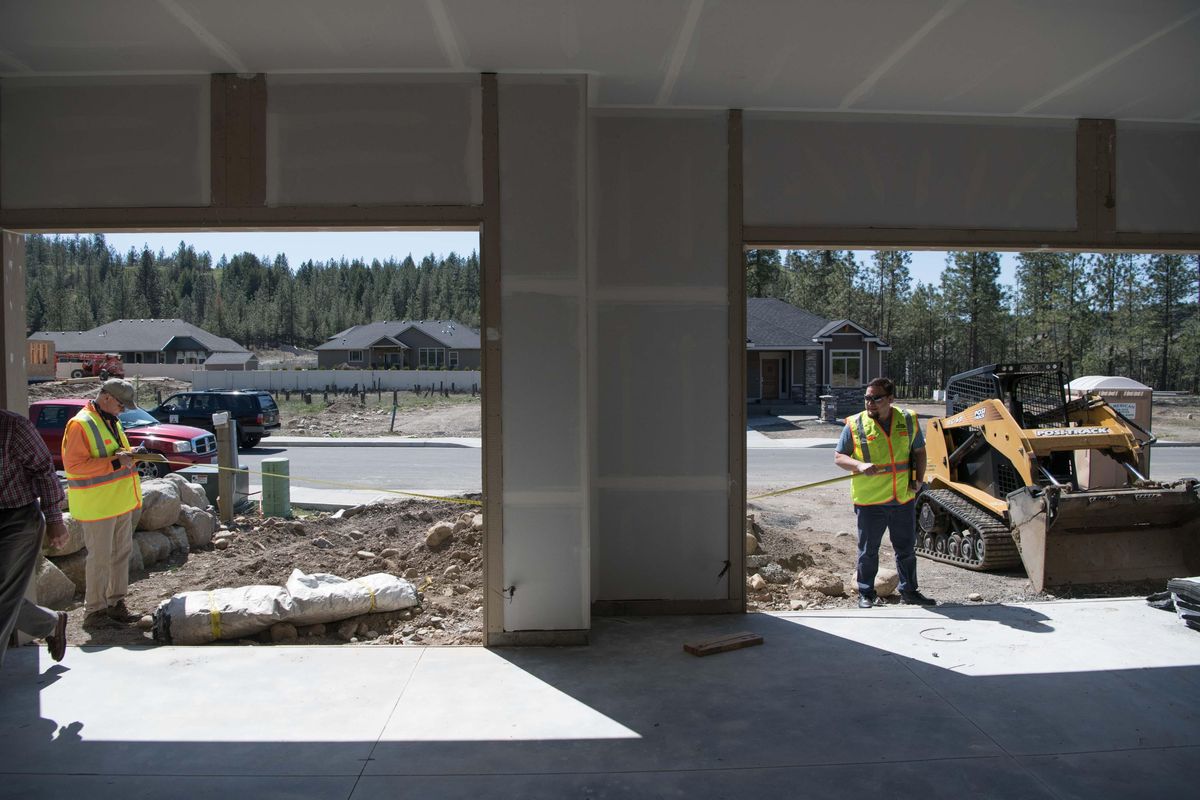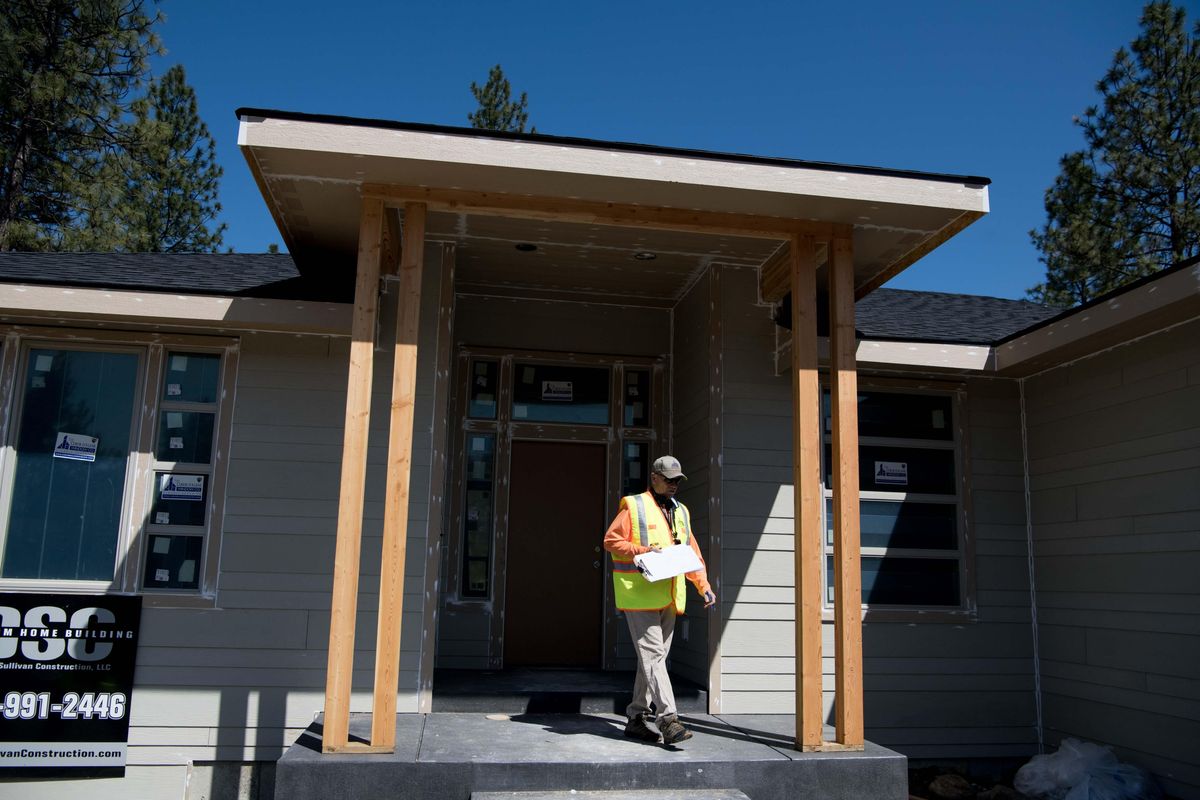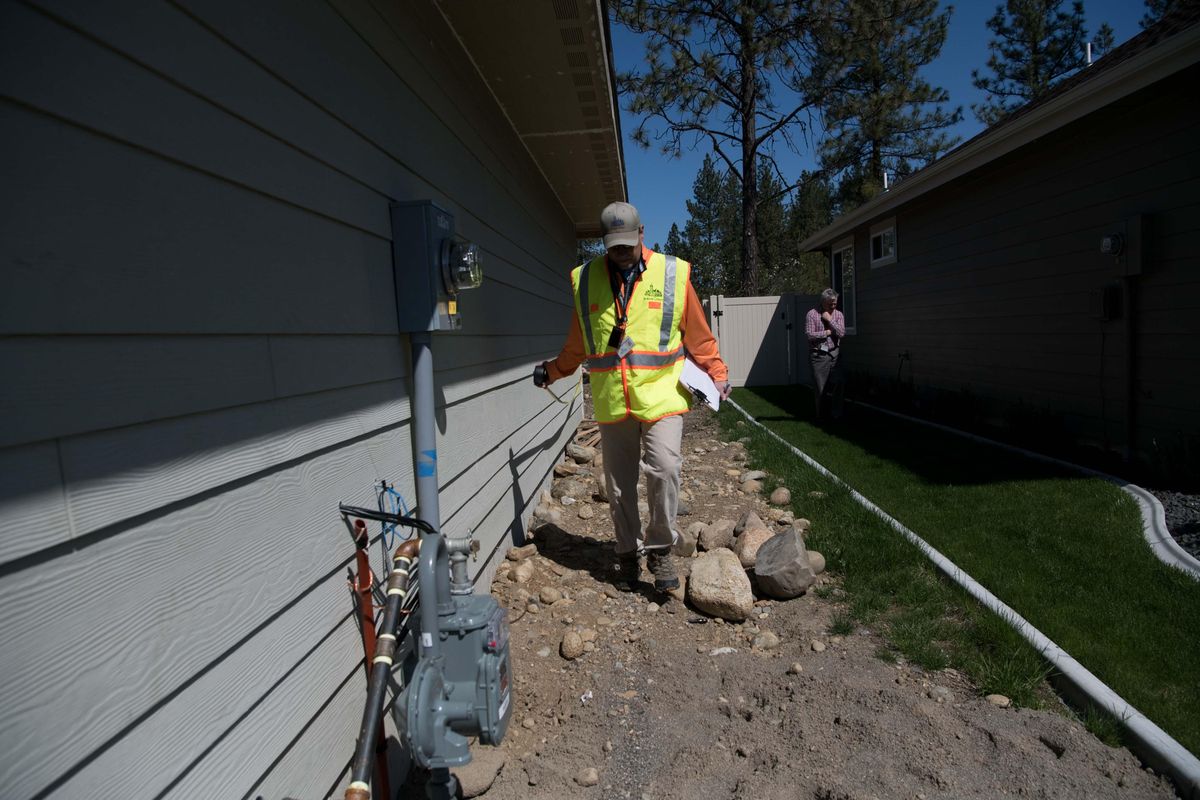Assessed value and your tax bill: Government spending has greatest impact on how much you pay
Jay Sporn, a Residential Appraisal Supervisor with the Spokane County Assessor's Office sizes up a newly built home on Monday April 23, 2018, in Spokane, Wash. (Tyler Tjomsland / The Spokesman-Review)Buy a print of this photo
Another year, another levy lid lift.
Okay, not necessarily, but property taxes and the tortured terminology surrounding them leave many homeowners confused. Yes, the process of assessing and distributing taxes is complex, based on statistical analyses, elections, neighborhood character and home sales. As the Municipal Research and Services Center notes, Washington state’s property tax is “one of the most complicated in the nation.”
In the end, though, it’s pretty simple. Your house is worth a certain amount, which is calculated once a year by county appraisers, and that value determines how much is collected by local governments, which is based on a set levy rate.
“Our appraisers physically inspect one-sixth of the county every year, and that includes residential, commercial and agricultural. We send assessment notices annually and you get an annual tax bill,” said Byron Hodgson, Spokane County’s chief deputy assessor. “People say, ‘My house isn’t worth this.’ Even when the market is declining, even when the market is escalating.”
The way the county determines home value is governed by state law, which states that property “must be valued at one hundred percent of its true and fair value in money.” That’s generally “interpreted as fair market value,” Hodgson said, noting that state law prohibits using a home’s sale price as its assessed value.
“In Washington, that’s not legal. It would be real simple if we could just do that. We wouldn’t need half of our staff,” he said.
Instead, appraisers use statistical analysis to calculate assessed value, drawing from a number of sources, including comparable home sale prices in a neighborhood, what type of house it is and the neighborhood’s character.
“We have sophisticated enough mechanisms here where we can look at ranchers, split-level two stories, small houses, large houses. We have all the houses divided up into like types,” Hodgson said.
Each year, the county places a dollar figure on 139,487 single-family residences and duplexes that is used by local taxing jurisdictions to figure out how much tax they’ll draw from the property owner.
In all, Spokane County has 55 taxing districts within its borders that create 124 different tax areas, because of overlapping boundaries of school districts, fire districts, library districts, cities and towns.
For instance, the county levies funds for the veterans relief fund and programs assisting people with mental health issues or developmental disabilities. It also has a $4.5 million road levy, Conservation Futures fund and a library levy. The city of Spokane has a park bond and road levy to pay for, as well as emergency medical services and a library levy. Airway Heights voters approved a bond to pay for an aquatics center. Spangle property owners are funding police and fire services.
Within these districts, and in the county as a whole, appraisers assess a total of 230,078 parcels.
In 2017, these parcels accounted for more than $45.6 billion in assessed property value, which brought in more than $618 million in taxes to the various jurisdictions.
The 99019 ZIP code, which encompasses Liberty Lake, brings in the highest median property taxes in the county, generating $3,587 per property annually between 2012 to 2016, according to census data from the American Community Survey and compiled by the Lincoln Institute of Land Policy.
Property owners in the 99204 ZIP code on Spokane’s South Hill pay a median tax of $2,074 a year. Taxpayers within the 99207 ZIP code in northeast Spokane pay the lowest median property tax in the county, at $1,233 a year.
Most of the taxes went to schools in 2017, which received more than $360 million of the $618 million collected. City levies drew more than $93 million, and fire districts got $67 million.
According to a state-by-state comparison by the Lincoln Institute, Washington’s various governments receive about 21 percent of their revenue from property taxes, a far smaller portion than Idaho and Oregon, which both collect about 30 percent of total revenue from property taxes.
Hodgson, with the county assessor’s office, said there’s no limit on assessed value, and it can go up and down as the market determines. But the levy rate has several limitations to it.
First, Washington voters passed Initiative 747 in 2001, which limits property tax increases to 1 percent a year. Second, the 1 percent limit also keeps levies to, at most, $10 for every $1,000 of assessed value, unless approved by voters. Lastly, state law keeps the combined state and local property taxes below $10 for every $1,000 of assessed value, referred to as the $10 limit.
Even with all these limitations, Hodgson said, what taxpayers pay is largely determined by government spending, not assessed value.
“Tax bills depend more on spending than anything,” he said. “All things being equal, if there’s no increase in spending and property values go up, the levy rate will drop to compensate for the increase in value.”



